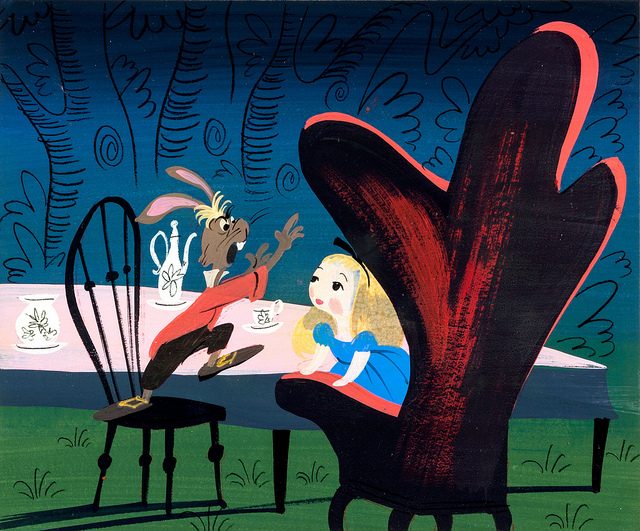“I’m afraid I can’t put it more clearly,” Alice replied very politely, “for I can’t understand it myself, to begin with; and being so many different sizes in a day is very confusing.”
(Lewis Carroll, Alice in Wonderland)
The Alice in Wonderland Syndrome was first described in 1955 by psychiatrist Dr. John Todd and refers to a strange shift in the perception of one’s own size or the shape and size of one’s surrounding objects. Todd associated these symptoms with migraine and epilepsy, and decided to give the condition this whimsical name as a token of appreciation for the author Lewis Carroll, who had suffered from migraines himself 1. One of the cases documented at the time involved a 39 year old woman who, when overwhelmed by anxiety, perceived her own body (and especially her abdomen) as growing large enough to occupy a whole room. Another case was that of a 40 year old man who sometimes felt like his head doubled in size and was convinced his height changed regularly, to anything between 3 and 8 feet. Other symptoms that accompanied these feelings often included flashes of light, nausea, depersonalisation and a plethora of other hallucinations and were often linked to family histories of neurological disorders.
The syndrome continued to intrigue specialists throughout the following decades. Subsequent studies revealed significant variation amongst patients suffering from these hallucinations: some people had recurrent episodes followed by the development of migraines, whereas others recovered completely. On top of reasserting the link between epileptic episodes, migraines and hallucinations, one study published in Pediatric Neurology found that the syndrome seemed to affect mainly young children, and was often associated with the presence of infection. However, no one could pinpoint an exact cause, so the condition continued to be shrouded in mystery 2.
Further investigations broadened the spectrum of possible causes even more – size-related hallucinations are now linked to the presence of the Epstein-Barr virus, intoxication with hallucinogens or even hypnagogia, the transition between sleep and wakefulness. One study published just last month suggests a correlation between the Alice in Wonderland Syndrome and temporo-parietal cavernoma, which is an abnormal cluster of blood vessels found at the junction of the temporal and parietal lobes 3.
So what can we make of this? Research so far suggests that the Alice in Wonderland Syndrome is not in fact one disorder linked to one particular case, but a subset of hallucinations determined by a specific area of the brain exhibiting abnormalities. These abnormalities could be caused by a myriad of factors. I, for one, feel like the the story of Alice will always be close to my heart, so I will be sure to keep an eye on whatever findings future research brings.
Edited by Debbie Nicol
References
- Todd J. The Syndrome of Alice in Wonderland. Canadian Medical Association Journal [Internet]. 1955;73(9):701-704.
- Liu A, Liu J, Liu G, Liu G. “Alice in Wonderland” Syndrome: Presenting and Follow-Up Characteristics. Pediatric Neurology. 2014;51(3):317-320.
- Philip M, Kornitzer J, Marks D, Lee H, Souayah N. Alice in Wonderland Syndrome associated with a temporo-parietal cavernoma. Brain Imaging and Behavior. 2015.

